
|
Now it is very bright as 10.3 mag (June 11, Carlos Labordena). It will be fading after this. It is not observable in the Southern Hemisphere. It is observable only until early July even in the Northern Hemisphere.
Date(TT) R.A. (2000) Decl. Delta r Elong. m1 Best Time(A, h)
June 29 7 48.65 46 49.3 2.135 1.332 28 12.0 21:04 (141, 10)
July 6 8 14.26 42 36.8 2.209 1.362 25 12.2 21:02 (138, 7)
|
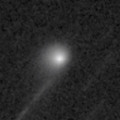
|
Now it is 13.3 mag (June 14, Thomas Lehmann). It will brighten up to 10.5 mag and it will be observable in good condition from autumn to winter.
Date(TT) R.A. (2000) Decl. Delta r Elong. m1 Best Time(A, h)
June 29 2 33.25 7 51.2 3.804 3.386 58 12.2 3:02 (271, 16)
July 6 2 36.48 9 21.2 3.683 3.361 63 12.1 3:06 (274, 22)
|
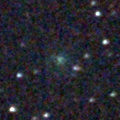
|
Now it is very bright as 11.2 mag (May 31, Chris Wyatt). It brightened very rapidly when it was not observable near by Sun. In the Southern Hemisphere, it stays observable in the evening sky for a long time after this while the comet will be fading. It is not observable at all in the Northern Hemisphere.
Date(TT) R.A. (2000) Decl. Delta r Elong. m1 Best Time(A, h)
June 29 7 39.94 -37 46.6 1.678 1.521 63 12.6 21:04 ( 67,-41)
July 6 8 19.86 -39 8.9 1.701 1.566 64 13.0 21:02 ( 64,-38)
|

|
Now it is not observable. It will appear in the morning sky again at 13-14 mag in August.
Date(TT) R.A. (2000) Decl. Delta r Elong. m1 Best Time(A, h)
June 29 5 34.69 20 8.7 3.113 2.136 13 13.1 3:02 (235,-12)
July 6 5 51.02 20 6.3 3.115 2.155 15 13.1 3:06 (237, -9)
|
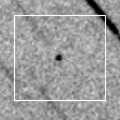
|
It passes the perihelion on July 2. Then it brightens up to 13 mag, but it is not observable around that time. In the Northern Hemisphere, it will appear in the morning sky at 16 mag in late July. In the Southern Hemisphere, it will be too low to observe.
Date(TT) R.A. (2000) Decl. Delta r Elong. m1 Best Time(A, h)
June 29 7 2.91 18 52.8 1.151 0.216 8 13.1 21:04 (128,-16)
July 6 6 53.94 24 57.5 0.832 0.188 2 24.6 3:06 (223,-16)
|

|
It is expected to brighten up to 7 mag in 2020. Appearing in the morning sky.
Date(TT) R.A. (2000) Decl. Delta r Elong. m1 Best Time(A, h)
June 29 4 24.47 15 32.2 4.891 4.046 30 13.6 3:02 (249, -2)
July 6 4 30.85 16 16.1 4.768 3.981 35 13.5 3:06 (252, 3)
|

|
Now it is bright as 13.0 mag (May 23, Ken-ichi Kadota).
Date(TT) R.A. (2000) Decl. Delta r Elong. m1 Best Time(A, h)
June 29 0 54.77 14 6.7 5.881 5.769 78 13.6 3:02 (281, 39)
July 6 0 56.99 14 32.7 5.774 5.770 84 13.5 3:06 (286, 45)
|
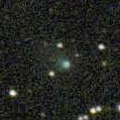
|
Now it is bright as 12.5 mag (June 28, Michael Jager). It is expected to brighten up to 10 mag in autumn. In the Northern Hemisphere, it stays observable for a long time while the comet is brightening. In the Southern Hemisphere, it it not observable until mid September.
Date(TT) R.A. (2000) Decl. Delta r Elong. m1 Best Time(A, h)
June 29 4 26.26 61 10.3 2.338 1.745 43 13.8 3:02 (211, 24)
July 6 4 28.95 60 35.9 2.238 1.694 45 13.5 3:06 (213, 27)
|

|
It brightened up to 7.7 mag in June in 2018 (June 19, Juan Jose Gonzalez). Now it is fading. But it is still bright as 13.4 mag (May 30, Chris Wyatt). In the Southern Hemisphere, it stays observable for a long time until the comet will fade out. In the Northern Hemisphere, it is not observable for a long time until autumn when the comet fades out down to 16 mag.
Date(TT) R.A. (2000) Decl. Delta r Elong. m1 Best Time(A, h)
June 29 6 14.32 -29 39.7 4.644 4.113 53 13.7 3:02 (277,-49)
July 6 6 20.79 -29 12.6 4.707 4.171 52 13.8 3:06 (279,-44)
|
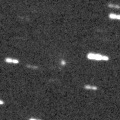
|
Now it is bright as 13.2 mag (May 30, Thomas Lehmann). It stays 13 mag for a long time in 2019. In the Southern Hemisphere, it is observable in excellent condition. In the Northern Hemisphere, it is not observasble until summer in 2020.
Date(TT) R.A. (2000) Decl. Delta r Elong. m1 Best Time(A, h)
June 29 7 44.12 -53 7.8 3.062 3.021 78 13.8 21:04 ( 47,-43)
July 6 7 50.10 -53 52.9 3.072 3.019 77 13.8 21:02 ( 46,-46)
|

|
Now it is 13.5 mag (May 30, Chris Wyatt). It stays 13-14 mag until summer. It is observable in excellent condition in the Southern Hemisphere. In the Northern Hemisphere, it will be getting lower gradually, and it will be unobservable in July.
Date(TT) R.A. (2000) Decl. Delta r Elong. m1 Best Time(A, h)
June 29 14 7.90 -43 0.1 2.934 3.594 123 13.9 21:04 ( 16, 10)
July 6 13 57.84 -42 49.4 3.061 3.623 115 14.0 21:02 ( 22, 7)
|

|
It has not been observed yet in this apparition. Now it is fainter than 18.5 mag (June 9, Martin Masek). It is expected to brighten up to 12 mag from August to September. It is observable in good condition in the Northern Hemisphere. It will be low around the high light in the Southern Hemisphere.
Date(TT) R.A. (2000) Decl. Delta r Elong. m1 Best Time(A, h)
June 29 1 42.18 5 6.7 1.377 1.425 71 15.0 3:02 (282, 25)
July 6 2 1.31 8 52.8 1.328 1.403 72 14.4 3:06 (280, 29)
|

|
Now it is 14.7 mag (June 23, Taras Prystavski). It will brighten rapidly after this. It will be observable at 13.5 mag in good condition in autumn.
Date(TT) R.A. (2000) Decl. Delta r Elong. m1 Best Time(A, h)
June 29 17 25.83 -3 21.4 1.264 2.227 154 14.8 22:56 ( 0, 52)
July 6 17 21.20 -3 28.3 1.250 2.189 149 14.6 22:24 ( 0, 51)
|

|
Now it is 14.4 mag (June 10, Martin Masek). In the Southern Hemisphere, it is observable for a long time. In the Northern Hemisphere, it will never be observable again.
Date(TT) R.A. (2000) Decl. Delta r Elong. m1 Best Time(A, h)
June 29 0 30.15 -45 0.9 3.722 4.121 106 14.7 3:02 (330, 0)
July 6 0 29.96 -45 9.5 3.669 4.140 110 14.7 3:06 (334, 3)
|

|
Now it is 16.9 mag (June 9, Martin Masek). It will brighten rapidly up to 11.5 mag in autumn. In the Northern Hemisphere, it will be observable in excellent condition. In the Southern Hemisphere, it will be extremely low from autumn to winter.
Date(TT) R.A. (2000) Decl. Delta r Elong. m1 Best Time(A, h)
June 29 0 10.33 -10 54.6 1.131 1.630 98 15.1 3:02 (312, 30)
July 6 0 25.62 -8 19.3 1.054 1.594 100 14.7 3:06 (314, 35)
|

|
It approached to Earth down to 0.3 a.u. in mid February, and brightened up to 5.5 mag (Feb. 13, Juan Jose Gonzalez). Now it is fading. It will appear in the morning sky in July in the Northern Hemisphere, or in August in the Southern Hemisphere.
Date(TT) R.A. (2000) Decl. Delta r Elong. m1 Best Time(A, h)
June 29 4 44.28 36 32.0 3.240 2.370 26 15.2 3:02 (230, 7)
July 6 4 45.30 37 1.7 3.248 2.445 31 15.4 3:06 (233, 12)
|

|
It brightens up to 15 mag from July to September. In the Southern Hemisphere, it becomes observable after late July. It is not observable at all in the Northern Hemisphere.
Date(TT) R.A. (2000) Decl. Delta r Elong. m1 Best Time(A, h)
June 29 6 36.63 1 46.8 2.376 1.478 21 15.4 21:04 (120,-33)
July 6 6 48.64 -1 29.9 2.320 1.456 24 15.3 3:06 (244,-34)
|
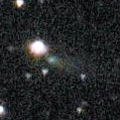
|
Now it is 14.8 mag (June 14, Thomas Lehmann). It stays at 15 mag for a while. It is observable in excellent condition in the Northern Hemisphere. It locates extremely low in the Southern Hemisphere.
Date(TT) R.A. (2000) Decl. Delta r Elong. m1 Best Time(A, h)
June 29 0 7.02 40 54.3 1.579 1.707 78 15.3 3:02 (247, 58)
July 6 0 21.07 42 30.8 1.580 1.744 81 15.4 3:06 (244, 62)
|
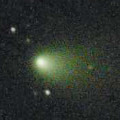
|
It brightened up to 12-13 mag from winter to spring. Now it is fading. It has already faded down to 15.1 mag (June 5, Thomas Lehmann). It will be getting lower after this. It will be unobservable in August in the Northern Hemisphere, or in September in the Southern Hemisphere.
Date(TT) R.A. (2000) Decl. Delta r Elong. m1 Best Time(A, h)
June 29 11 56.87 7 48.2 2.365 2.399 79 15.5 21:04 ( 74, 34)
July 6 12 5.70 6 4.3 2.467 2.423 75 15.7 21:02 ( 76, 29)
|
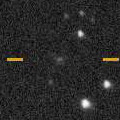
|
Now it is 16.6 mag (May 10, Mount John Observatory, Lake Tekapo). It stays 16 mag for a long time from 2019 to 2020. It is observable in excellent condition in the Southern Hemisphere. It is hardly observable in the Northern Hemisphere.
Date(TT) R.A. (2000) Decl. Delta r Elong. m1 Best Time(A, h)
June 29 10 53.77 -53 48.3 3.495 3.736 95 15.9 21:04 ( 35,-17)
July 6 10 52.74 -53 28.3 3.544 3.711 91 15.9 21:02 ( 38,-20)
|

|
Now it is 14.2 mag (May 7, Thomas Lehmann). It will be fading after this. In the Southern Hemisphere, it stays observable for a long time until it fades out. In the Northern Hemisphere, it will not be observable after this.
Date(TT) R.A. (2000) Decl. Delta r Elong. m1 Best Time(A, h)
June 29 6 13.96 -23 10.8 4.995 4.360 46 15.9 3:02 (268,-46)
July 6 6 18.16 -24 1.6 5.029 4.410 47 16.0 3:06 (273,-41)
|
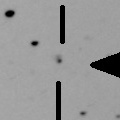
|
Asteroid, but it brightened rapidly. Now it is 16.3 mag (May 24, ATLAS-MLO, Mauna Loa). It is observable in excellent condition in the Southern Hemisphere. It is hardly observable in the Northern Hemisphere.
Date(TT) R.A. (2000) Decl. Delta r Elong. m1 Best Time(A, h)
June 29 21 56.56 -40 43.4 5.695 6.437 133 16.0 3:02 (354, 14)
July 6 21 48.85 -41 18.7 5.623 6.434 139 16.0 2:56 ( 0, 14)
|

|
Now it is 16.1 mag (June 5, Toshihiko Ikemura, Hirohisa Sato). It will be fading slowly after this. It is observable in good condition in the Northern Hemisphere. In the Southern Hemisphere, it stays extremely low for a while.
Date(TT) R.A. (2000) Decl. Delta r Elong. m1 Best Time(A, h)
June 29 14 42.22 39 19.9 4.613 4.860 97 16.1 21:04 (116, 79)
July 6 14 40.96 37 51.2 4.728 4.913 94 16.2 21:02 (105, 74)
|

|
Now it is 16.3 mag (May 23, Ken-ichi Kadota). It will brighten up to 16 mag from June to August, and it will be observable in excellent condition in the Northern Hemisphere. It is not observable in the Southern Hemisphere.
Date(TT) R.A. (2000) Decl. Delta r Elong. m1 Best Time(A, h)
June 29 22 33.20 83 42.9 1.813 1.747 69 16.2 3:02 (183, 41)
July 6 16 41.67 85 14.6 1.771 1.735 71 16.1 21:20 (180, 40)
|

|
Now it is 16.0 mag (June 27, Steward Observatory, Mt. Lemmon Station). It stays observable in good condition while the comet will be fading slowly after this.
Date(TT) R.A. (2000) Decl. Delta r Elong. m1 Best Time(A, h)
June 29 1 26.89 9 41.9 2.087 2.038 73 16.2 3:02 (280, 30)
July 6 1 41.83 10 12.2 2.032 2.043 76 16.1 3:06 (282, 34)
|

|
It has not been observed yet in this apparition. It will be observable at 16 mag in good condition from summer to autumn. It locates somewhat low in the Southern Hemisphere.
Date(TT) R.A. (2000) Decl. Delta r Elong. m1 Best Time(A, h)
June 29 1 44.49 16 28.8 2.188 2.015 66 16.5 3:02 (270, 30)
July 6 1 57.87 17 56.8 2.129 2.018 69 16.4 3:06 (272, 35)
|
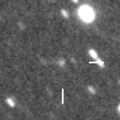
|
Now it is 17.2 mag (May 26, iTelescope Observatory, Siding Spring). It will be fading slowly after this. It is observable in excellent condition in the Southern Hemisphere. It locates low in the Northern Hemisphere.
Date(TT) R.A. (2000) Decl. Delta r Elong. m1 Best Time(A, h)
June 29 15 56.87 -41 32.7 2.820 3.687 143 16.4 21:27 ( 0, 13)
July 6 15 38.86 -41 20.4 2.890 3.676 134 16.5 21:02 ( 4, 13)
|

|
Now it is 16.1 mag (June 5, Toshihiko Ikemura, Hirohisa Sato). It will brighten up to 14 mag in winter. It stays observable for a long time in the Southern Hemisphere. It is observable only until early August in the Northern Hemisphere.
Date(TT) R.A. (2000) Decl. Delta r Elong. m1 Best Time(A, h)
June 29 15 58.99 -31 58.9 2.420 3.311 145 16.6 21:30 ( 0, 23)
July 6 15 46.15 -32 52.7 2.436 3.252 136 16.6 21:02 ( 3, 22)
|

|
Now it is 16.6 mag (June 6, Thomas Lehmann). It is expected to be observable at 5-6 mag for a long time from 2022 to 2023. In the Northern Hemisphere, it is not observable at the highlight from 2022 summer to 2023 summer. In the Southern Hemisphere, it stays unobservable for a while. But it will be observable in good condition at the highlight.
Date(TT) R.A. (2000) Decl. Delta r Elong. m1 Best Time(A, h)
June 29 17 33.67 58 27.4 11.204 11.380 97 16.8 23:04 (180, 67)
July 6 17 29.26 58 12.4 11.166 11.334 96 16.8 22:32 (180, 67)
|

|
Now it is 17.3 mag (May 29, Toshihiko Ikemura, Hirohisa Sato). It stays 16-17 mag for a long time until 2020. It is observable in good condition in the Northern Hemisphere. It is not observable at all in the Southern Hemisphere.
Date(TT) R.A. (2000) Decl. Delta r Elong. m1 Best Time(A, h)
June 29 11 8.43 63 12.7 8.934 8.476 60 16.9 21:04 (146, 41)
July 6 11 13.35 62 19.3 8.977 8.480 57 16.9 21:02 (145, 39)
|

|
Now it is 18.0 mag (June 29, Michael Jager). It will brighten up to 17 mag from June to July, and will be observable in good condition.
Date(TT) R.A. (2000) Decl. Delta r Elong. m1 Best Time(A, h)
June 29 17 25.34 -18 24.4 1.407 2.402 164 17.0 22:54 ( 0, 37)
July 6 16 55.79 -14 44.3 1.456 2.391 149 17.1 21:57 ( 0, 41)
|

|
Now it is 16.4 mag (May 26, Toshihiko Ikemura, Hirohisa Sato). It is observable at 17 mag in good condition in 2019. It locates somewhat low in the Northern Hemisphere.
Date(TT) R.A. (2000) Decl. Delta r Elong. m1 Best Time(A, h)
June 29 15 12.14 -15 27.0 3.163 3.928 133 17.2 21:04 ( 6, 39)
July 6 15 10.96 -15 33.4 3.250 3.936 126 17.3 21:02 ( 15, 38)
|

|
It has not been observed yet in this apparition. It will brighten up to 15.5 mag and it will be observable in good condition in autumn.
Date(TT) R.A. (2000) Decl. Delta r Elong. m1 Best Time(A, h)
June 29 23 45.14 -5 32.5 2.483 2.877 102 17.5 3:02 (314, 38)
July 6 23 50.51 -5 15.3 2.367 2.845 107 17.3 3:06 (321, 42)
|

|
It has not been observed yet in this apparition. It was expected to be observable at 17.5 mag from June to August. But actually, it was fainter than 21.5 mag in March (Mar. 10, Erwin Schwab).
Date(TT) R.A. (2000) Decl. Delta r Elong. m1 Best Time(A, h)
June 29 18 48.21 -11 37.5 1.120 2.124 167 17.5 0:23 ( 0, 43)
July 6 18 43.83 -12 41.6 1.107 2.115 169 17.5 23:47 ( 0, 42)
|

|
Now it is 17.7 mag (June 24, D. T. Durig). It will be observable at 17 mag in good condition from August to September.
Date(TT) R.A. (2000) Decl. Delta r Elong. m1 Best Time(A, h)
June 29 1 33.30 41 52.7 2.532 2.262 63 17.6 3:02 (242, 42)
July 6 1 35.02 40 54.3 2.432 2.268 68 17.5 3:06 (245, 48)
|

|
Now it is 17.3 mag (May 26, iTelescope Observatory, Siding Spring). In the Southern Hemisphere, it is observable at 17.5 mag in good condition from spring to summer. In the Northern Hemisphere, it is not observable at all.
Date(TT) R.A. (2000) Decl. Delta r Elong. m1 Best Time(A, h)
June 29 16 22.99 -55 31.5 3.563 4.392 140 17.7 21:54 ( 0, -1)
July 6 16 18.78 -54 48.4 3.601 4.393 136 17.7 21:23 ( 0, 0)
|

|
Now it is 17.7 mag (May 14, Catalina Sky Survey). It will be observable at 17.5 mag in excellent condition in the Northern Hemisphere. It locates somewhat low in the Southern Hemisphere. It is faint as 19.0 mag recently (May 29, Toshihiko Ikemura, Hirohisa Sato).
Date(TT) R.A. (2000) Decl. Delta r Elong. m1 Best Time(A, h)
June 29 17 40.28 29 16.2 1.304 2.073 126 17.7 23:07 ( 0, 84)
July 6 16 56.98 26 37.2 1.357 2.088 122 17.9 21:57 ( 0, 81)
|

|
Now it is 17.4 mag (May 7, Toshihiko Ikemura, Hirohisa Sato). It will brighten up to 17.5 mag from June to July.
Date(TT) R.A. (2000) Decl. Delta r Elong. m1 Best Time(A, h)
June 29 20 24.50 -29 26.9 1.678 2.628 153 17.8 1:59 ( 0, 26)
July 6 20 22.80 -31 5.4 1.677 2.653 159 17.9 1:30 ( 0, 24)
|

|
In the Southern Hemisphere, it is observable at 18 mag in good condition from July to August. It locates low in the Northern Hemisphere.
Date(TT) R.A. (2000) Decl. Delta r Elong. m1 Best Time(A, h)
June 29 20 37.65 -31 14.2 2.723 3.643 150 18.0 2:12 ( 0, 24)
July 6 20 34.08 -31 45.9 2.682 3.639 156 17.9 1:41 ( 0, 23)
|
|
![]()
 68P/Klemola
68P/Klemola C/2017 B3 ( LINEAR )
C/2017 B3 ( LINEAR ) 260P/McNaught
260P/McNaught C/2018 Y1 ( Iwamoto )
C/2018 Y1 ( Iwamoto ) C/2019 A9 ( PanSTARRS )
C/2019 A9 ( PanSTARRS ) C/2019 D1 ( Flewelling )
C/2019 D1 ( Flewelling ) 123P/West-Hartley
123P/West-Hartley C/2018 F4 ( PanSTARRS )
C/2018 F4 ( PanSTARRS ) C/2016 N6 ( PanSTARRS )
C/2016 N6 ( PanSTARRS ) A/2017 U7
A/2017 U7 C/2016 R2 ( PanSTARRS )
C/2016 R2 ( PanSTARRS ) C/2019 J2 ( Palomar )
C/2019 J2 ( Palomar ) C/2019 K5 ( Young )
C/2019 K5 ( Young ) 261P/Larson
261P/Larson C/2018 KJ3 ( Lemmon )
C/2018 KJ3 ( Lemmon ) C/2019 K1 ( ATLAS )
C/2019 K1 ( ATLAS ) C/2017 K2 ( PanSTARRS )
C/2017 K2 ( PanSTARRS ) C/2010 U3 ( Boattini )
C/2010 U3 ( Boattini ) C/2019 J3 ( ATLAS )
C/2019 J3 ( ATLAS ) 74P/Smirnova-Chernykh
74P/Smirnova-Chernykh 101P/Chernykh
101P/Chernykh P/2012 K3 ( Gibbs )
P/2012 K3 ( Gibbs ) C/2019 K4 ( Ye )
C/2019 K4 ( Ye ) 186P/Garradd
186P/Garradd C/2019 JU6 ( ATLAS )
C/2019 JU6 ( ATLAS ) C/2019 J1 ( Lemmon )
C/2019 J1 ( Lemmon ) 215P/NEAT
215P/NEAT![]()
























